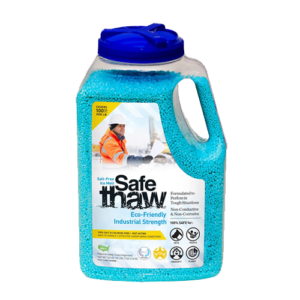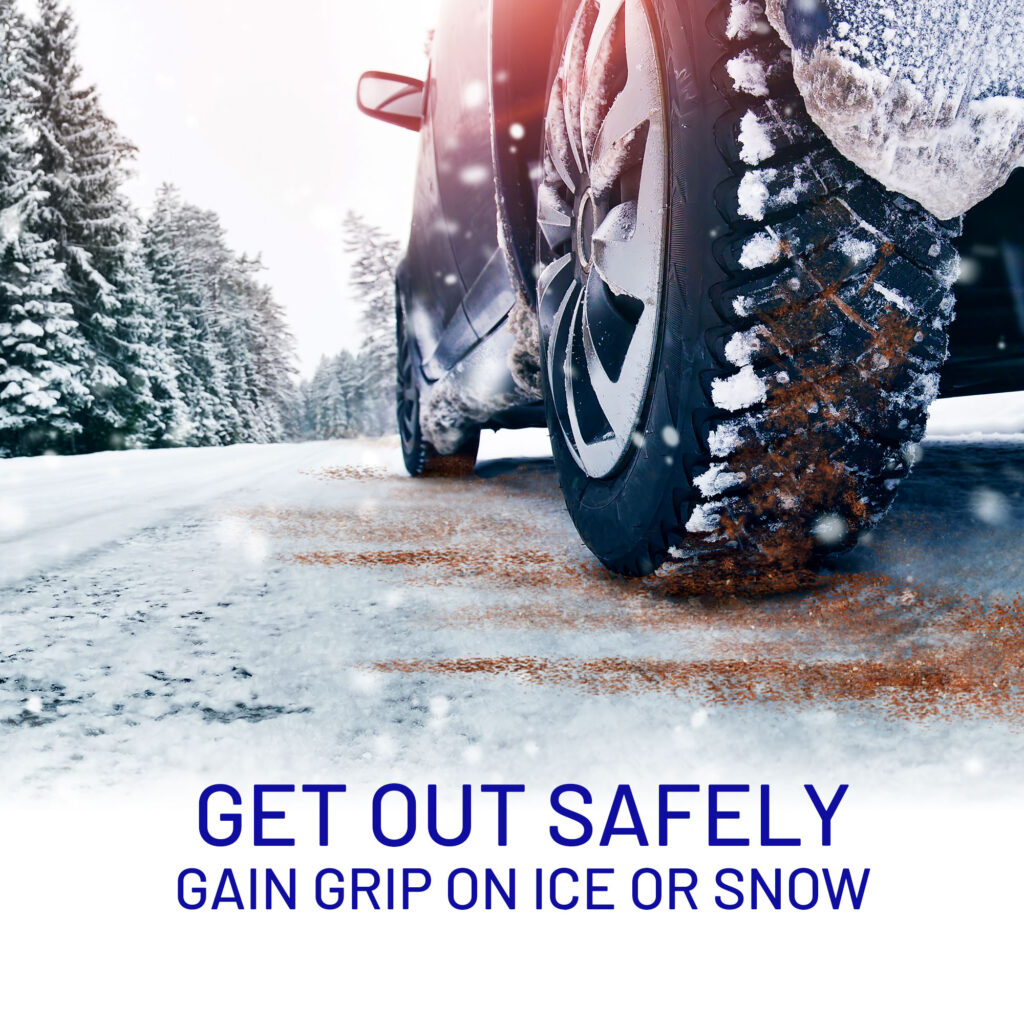What Temperature Does Salt Melt Ice?

Applying rock salt and ice melt on pavements is a popular method of clearing snow. Did you know, though, that different forms of ice melt work best at different temperatures? It’s critical to know what temperature your ice melt will operate best at before you finish it.
What Temperature Does Ice Melt?
When the temperature around a piece of ice rises, the temperature of the ice increases with it. When the ice reaches its melting point, however, the gradual temperature rise comes to an end. The ice changes to state and becomes liquid water at this point, and the temperature does not change until all of it has melted. The ice water will remain at a freezing 32 degrees Fahrenheit until it has all melted. The ice melting point is 0 degrees Celsius or 32 degrees Fahrenheit. So, if you are asked at what temperature does snow melt? The answer is simple: 0 degrees Celsius.
What Temperature Does Snow Melt?
Snow is a piece of fancy-looking ice that drops in small pieces but accumulates into a larger form when it settles. Water changes states at 0°C or 32°F, and ice is the solid state of water. The snow will melt above 32° or freeze below 32° as a result of this. It does not take into consideration the radiation from the sun, winds, humidity, or other factors. So, at what temperature does ice start to melt? 32 degrees Fahrenheit.
Why Does Salt Melt Ice?
Does salt melt ice? Yes, it does. Let us know more about why and how behind it. A solution of water plus dissolved salt has a lower freezing point than pure water is the real reason why salt causes ice to melt. When salt is added to ice, it dissolves first in the thin film of liquid water, always present on the surface, decreasing the freezing point below that of the ice. As a result, ice that comes into touch with salty water melts, resulting in more liquid water, which dissolves more salt, causing more ice to melt, and so on. The lower the overall freezing point, the higher the concentration of dissolved salt. However, the amount of salt that can be dissolved in water has a limit.
How Does Salt Melt Ice?
However, you might be wondering how salt reduces water’s freezing point. The salt makes it more difficult for the water molecules to form a rigid structure. Salt is soluble in water. If you use table salt, known as sodium chloride (NaCl), to melt ice, it will dissolve to form a solution. The salt solution thus formed has both sodium and chloride ions. On the other hand, some organizations and homemakers frequently utilize calcium chloride (CaCl2), a different salt, to melt the ice on their streets. Calcium chloride breaks down into three ions instead of two. Therefore, it is more effective at melting ice: one calcium ion and two chloride ions.
Chloride, unfortunately, is harmful to the environment. It has the potential to harm aquatic animals, which can have an impact on other animal populations in their food web. Chloride dehydrates and destroys plants, and it can change the makeup of the soil, making it difficult for vegetation to flourish. Other substances that can melt ice and snow that do not contain chloride are substantially more expensive than sodium chloride or calcium chloride.
What Temperature Does Salt Melt Ice?
Quickly removing ice from walkways, driveways and decks prevent slip-and-fall accidents that can cause serious injury. The problem with most ice melters is that they are formulated with chemicals harmful to children and pets when ingested or brought in contact with their skin. They also damage driveways, kill vegetation, and harm flooring when tracked into the house.
Safe Paw ice melt is the solution. It is a breakthrough ice melt that is safe to use, works quickly, and gets the job done at much colder temperatures than most ice melting products.
Get ready for winter with the ONLY Pet Safe Ice Melt you can trust
Comparing Melting Points Of Leading Ice Melt Products
This list shows how Safe Paw stacks up against the most common ice melt formulas based on safety and their lowest effective temperature. All temperatures are Fahrenheit:
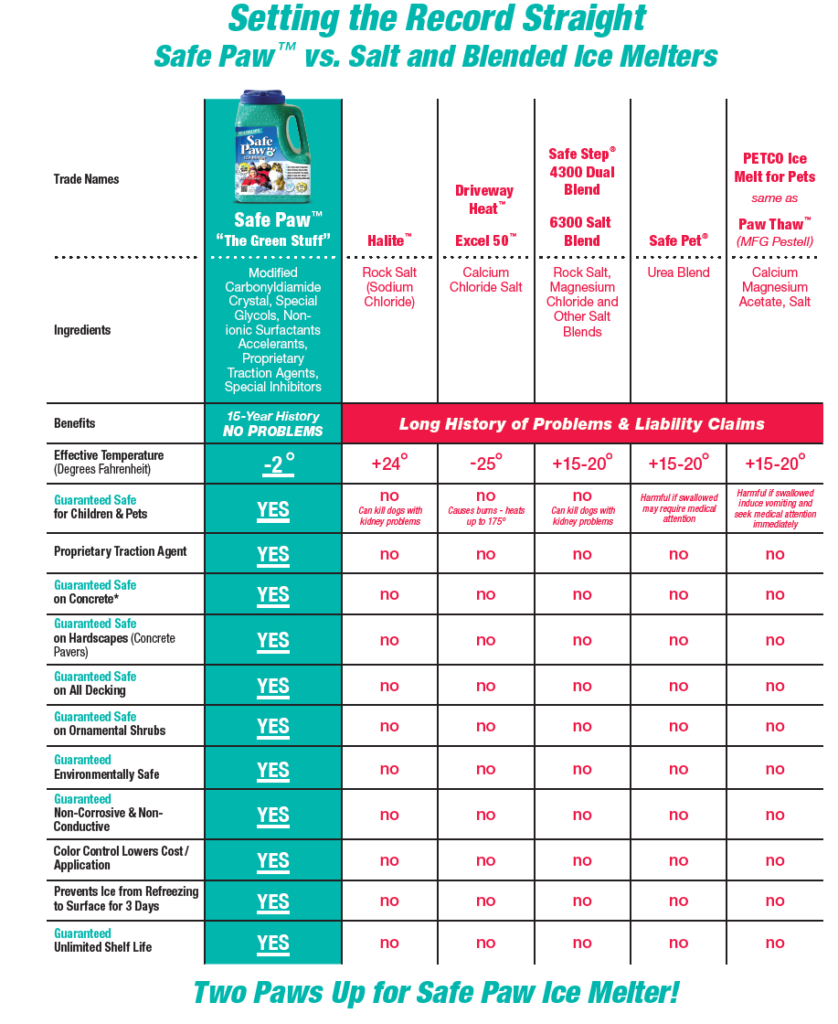
We already know at what temperature does ice start to melt and what temp does snowmelt. So, let us compare the effective temperature of different ice melt solutions.
As you can see, only Driveway Heat and Excel 50 melt ice at a colder temperature than Safe Paw. The problem, however, is that those two products are calcium chloride (CaCl2) salt and are the most dangerous of all the products on the list.
The ice-melting benefits of products containing salt are outweighed by the fact that they are poisons that can cause skin burns and blistering, as well as irritation to the mouth and throat and stomach upset. Safe Paw ice melt does not have salt and there are no ill effects associated with its use. It is completely non-toxic and does not irritate.
Note: Safe Paw is the only salt-free ice melt available. All others are salt-based including Road Runner, Zero Ice, Arctic, Qik Joe, Ice Vice, and Peladow, and those mentioned above.
Ice Melt Safe For Concrete And Pets
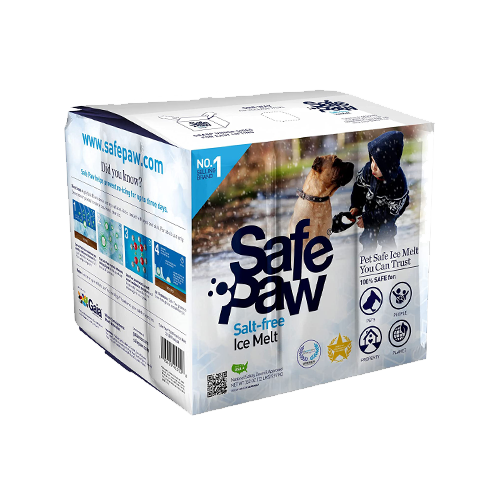
Safe Paw
The Original and the #1 Pet and Child Safe Ice Melt for over 20 years. Guaranteed environmentally safe – will not harm waterways and sensitive wetlands.
Benefits Of Salt Free Ice Melt
In addition to effectively melting ice in sub-zero temperatures and being safe to use, consumers choose salt-free ice melt instead of traditional ice melting salts for these reasons:
- Works more quickly than salt de-icers
- Includes a traction agent that immediately helps prevent slips and fall incidents, keeping you and all others safe from winter hazards.
- An environmentally safe formula
- Would not corrode metal or harm decking material of any type
- Would not cause damage to asphalt, concrete, or pavers
- Do not kill vegetation.
- Do not cause staining or deterioration of flooring materials such as wood, carpet, vinyl, tile, natural stone, etc.
- Coats surfaces to keep them ice-free for up to three days after application.
Rock Salt Pollution
Rock salt dissolves and separates into chloride and sodium ions after being put on the roads. It raises the salt concentration of freshwater sources. It accumulates continuously over time, as it is carried to streams, lakes, and rivers via surface runoff while also seeping into the earth’s groundwater supply. After extensive use of rock salt, when the spring comes, the salt concentration in freshwater rises to roughly one-third of what it is in the ocean.
When salt builds up in the soil, it makes it difficult for plants to absorb nutrients. Salty soil gets brown patches on the grass and stunted plants in the garden.
Sodium chloride is exceedingly caustic and destructive. It has been reported to rust automobiles and causes damage to bridges, concrete structures, and fractured pavement surfaces. It is infamous for leaving lasting stains on boots, pants, coats, and other outdoor items that it comes into touch with.
After walking on treated surfaces, cats and dogs frequently experience intense burning, inflammation, and cracked pads. Pets can absorb it by licking their paws if it is not rinsed off quickly away. Some of the symptoms of road salt exposure and consumption in pets are salivation, diarrhea, vomiting, severe water loss, and seizure. Can salt melt ice? Yes. But is it worth using? Surely No.
Gaia Enterprises Inc. delivers 100% pet-safe and environmentally friendly winter products. Safe Paw, our flagship product, is the #1 selling pet-safe ice melt that does not harm pets, safe if ingested, and safe on all types of concrete.
What Makes Safe Paw Different?
The difference is in Safe Paw Ice Melt’s proprietary formula. Let’s compare.
Salt-based ice melt: The most common compounds used in salt-based formulas are sodium chloride, calcium chloride, magnesium chloride, urea, and calcium magnesium acetate. None of these compounds are safe for pets and kids. In fact, some are so poisonous that medical care might be required if they are ingested. The salt pellets or crystals often dissolve very slowly, so they remain on the surface longer where they attract the attention of pets and kids. The slow rate of dissolving also means that the walkway, driveway, and deck are unsafe for a longer period than when fast-acting Safe Paw de-icer is applied. All salt-based ice melt poses additional threats to your driveway, landscape, and home.
Safe Paw ice melt: Safe Paw is a salt-free ice melter, a formula with a patented blend that is customized to be both safe and effective. In fact, Safe Paw meets the strict criteria required to receive United States governmental agencies’ awards for environmental friendliness.
Here is a breakdown of the proprietary dual-action formula and why it is more effective than salt:
- An outer layer liquefies immediately upon contact to melt and break up the ice surface
- The crystalline amide core of Safe Paw then quickly penetrates the structure of the ice where the added glycols break it down for faster melting or easier removal
- Salt-free, so there is no danger of salt burns or poisoning
As you can see from the comparison of Safe Paw vs. salt-based ice melters, there really is no comparison. Safe Paw is more effective than most other products in quickly melting ice and preventing its return. Most importantly, it is safe to use where children and pets are enjoying their time outdoors.
Get ready for winter with the ONLY Pet Safe Ice Melt you can trust
How You Can Overcome Common Winter Problems With Natural Ice Melt
How Safe Is Chloride Free Ice Melt?
The good news is that natural ice melt is salt-free and suitable for both children and pets. These salt melts are awarded for being safe for people, pets, and the environment. Some of the awards and articles referring to these environment-friendly ice melts are
- United States governmental agencies awards
- Parent Tested Parent Approved (PTPA) Green Product Seal of Approval https://www.ptpamedia.com/services/parent-tested-parent-approved-seal-of-approval/ for products that are family-friendly and effective.
- Inclusion in the Whole Green Catalog – 1000 Best Things for the Earth
When the granules of these ice melt come into touch with ice, the outer layer liquefies and begins to penetrate and break up the surface.
Even in frigid temperatures, after the ice has melted, this ice melt is present on the surface of pathways, steps, porches, decks, patios, and wherever else you need safe, dependable footing to resist ice. Pediatricians, veterinarians, and wildlife experts all suggest it.
Get ready for winter with the ONLY Pet Safe Ice Melt you can trust
Conclusion
A natural ice melt that’s devoid of caustic salts, colours, and dangerous chemicals is the best ice melt solution for homeowners. It is perfectly safe to use around pets. It is a non-corrosive snow and ice melt since it is chloride-free. Before buying your ice melt make sure that it is quick and effective not only on sunny days but especially during the days when you have a temperature below freezing point.
FAQs
Stay safe and confident this winter with Traction Magic!
This innovative, 100% natural product offers instant traction on any icy surface. Whether you’re navigating your sidewalk, steps, or driveway, Traction Magic helps you stay upright and prevents falls.
Other Ice Melt Products
Walk On Ice
Prevent slips at home, work or on the go, The handy disposable canister can be taken everywhere, with the same 100% naturally occurring minerals that provide instant traction on ice or snow.
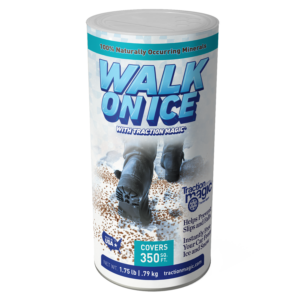
Safe Thaw
Imagine an ice melt you can put down and never worry about. It won’t harm pets, kids and your property. That’s Safe Thaw. Unlike anything else on the market, Safe Thaw can change how winter affects our planet.
